Showing Spotlights 1337 - 1344 of 2875 in category All (newest first):
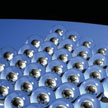 Over the past decade, electromagnetic metamaterials have become an extremely active field of research in both the physics and the engineering communities. Metamaterials gain their properties from their structure rather than directly from their composition and show the peculiarity of having an index of refraction at optical frequencies from negative to very high positive values. Researchers have now suggested a new type of optical sensing device based on artificial metamaterials with topological darkness.
Over the past decade, electromagnetic metamaterials have become an extremely active field of research in both the physics and the engineering communities. Metamaterials gain their properties from their structure rather than directly from their composition and show the peculiarity of having an index of refraction at optical frequencies from negative to very high positive values. Researchers have now suggested a new type of optical sensing device based on artificial metamaterials with topological darkness.
Nov 26th, 2013
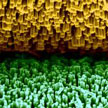 There is an almost infinite number of mechanical energy sources all around us - basically, anything that moves can be harvested for energy. These environmental energy sources can the very large, like wave power in the oceans, or very small, like rain drops or biomechanical energy from heart beat, breathing, and blood flow. With the increasing use of nanotechnology materials and applications in energy research, scientists are finding more and more ways to tap into these pretty much limitless sources of energy. Self-powered nanotechnology based on piezoelectric nanogenerators aims at powering nanodevices and nanosystems using the energy harvested from the environment in which these systems are suppose to operate.
There is an almost infinite number of mechanical energy sources all around us - basically, anything that moves can be harvested for energy. These environmental energy sources can the very large, like wave power in the oceans, or very small, like rain drops or biomechanical energy from heart beat, breathing, and blood flow. With the increasing use of nanotechnology materials and applications in energy research, scientists are finding more and more ways to tap into these pretty much limitless sources of energy. Self-powered nanotechnology based on piezoelectric nanogenerators aims at powering nanodevices and nanosystems using the energy harvested from the environment in which these systems are suppose to operate.
Nov 19th, 2013
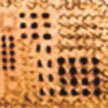 Advances in materials, fabrication strategies and device designs for flexible and stretchable electronics and sensors make it possible to envision a not-too-distant future where ultra-thin, flexible circuits based on inorganic semiconductors can be wrapped and attached to any imaginable surface, including body parts and even internal organs. Robotic technologies will also benefit as it becomes possible to fabricate electronic skin ('e-skin') that, for instance, could allow surgical robots to interact, in a soft contacting mode, with their surroundings through touch.
Advances in materials, fabrication strategies and device designs for flexible and stretchable electronics and sensors make it possible to envision a not-too-distant future where ultra-thin, flexible circuits based on inorganic semiconductors can be wrapped and attached to any imaginable surface, including body parts and even internal organs. Robotic technologies will also benefit as it becomes possible to fabricate electronic skin ('e-skin') that, for instance, could allow surgical robots to interact, in a soft contacting mode, with their surroundings through touch.
Nov 15th, 2013
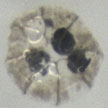 Advances in micro- and nanoscale engineering in the medical field have led to the development of various robotic designs that one day will allow a new level of minimally invasive medicine. These micro- and nanorobots will be able to reach a targeted area, provide treatments and therapies for a desired duration, measure the effects and, at the conclusion of the treatment, be removed or degrade without causing adverse effects. Ideally, all these tasks would be automated but they could also be performed under the direct supervision and control of an external user.
Advances in micro- and nanoscale engineering in the medical field have led to the development of various robotic designs that one day will allow a new level of minimally invasive medicine. These micro- and nanorobots will be able to reach a targeted area, provide treatments and therapies for a desired duration, measure the effects and, at the conclusion of the treatment, be removed or degrade without causing adverse effects. Ideally, all these tasks would be automated but they could also be performed under the direct supervision and control of an external user.
Nov 13th, 2013
 Theranostics - a combination of the words therapeutics and diagnostics - describes a treatment platform that combines a diagnostic test with targeted therapy based on the test results, i.e. a step towards personalized medicine. Theranostic nanomedicine has the potential for simultaneous and real time monitoring of drug delivery, trafficking of drug and therapeutic responses. Researchers have now demonstrated for the first time a MRI-visual order-disorder micellar nanostructures for smart cancer theranostics.
Theranostics - a combination of the words therapeutics and diagnostics - describes a treatment platform that combines a diagnostic test with targeted therapy based on the test results, i.e. a step towards personalized medicine. Theranostic nanomedicine has the potential for simultaneous and real time monitoring of drug delivery, trafficking of drug and therapeutic responses. Researchers have now demonstrated for the first time a MRI-visual order-disorder micellar nanostructures for smart cancer theranostics.
Nov 12th, 2013
 Going hand in hand with the development of wearable electronic textiles, researchers are also pushing the development of wearable and flexible energy storage to power those e-textiles. Researchers have now developed wearable textile batteries that can be integrated with flexible solar cells and thus be recharged by solar energy. The team found unconventional materials for all of the key battery components and integrated them into a fully wearable battery.
Going hand in hand with the development of wearable electronic textiles, researchers are also pushing the development of wearable and flexible energy storage to power those e-textiles. Researchers have now developed wearable textile batteries that can be integrated with flexible solar cells and thus be recharged by solar energy. The team found unconventional materials for all of the key battery components and integrated them into a fully wearable battery.
Nov 8th, 2013
 Friction is present in numerous physical phenomena occurring at all length scale. About 1/3 of the world's primary energy is dissipated in mechanical friction and 80% of machinery components' failure is caused by wear. Friction and wear will also become bottlenecks for micro-/nano-mechanical systems (MEMS and NEMS) featured with sliding components. Superlubricity, a phenomenon where the friction almost vanishes between two solid surfaces, will be the key to solve these problems and researchers now report a breakthrough in macroscale superlubricity.
Friction is present in numerous physical phenomena occurring at all length scale. About 1/3 of the world's primary energy is dissipated in mechanical friction and 80% of machinery components' failure is caused by wear. Friction and wear will also become bottlenecks for micro-/nano-mechanical systems (MEMS and NEMS) featured with sliding components. Superlubricity, a phenomenon where the friction almost vanishes between two solid surfaces, will be the key to solve these problems and researchers now report a breakthrough in macroscale superlubricity.
Nov 7th, 2013
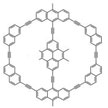 Most molecular machines operate by using chemical reactions, which lead to irreversible damage to the machine molecules themselves over time. Moreover, in most scenarios, the measurement and control of the molecular machine status are separated into distinct steps, e.g., the molecular motion is controlled by a chemical reaction, but is then detected by spectroscopy or electrochemistry. Researchers have now proposed a new type of molecular machine without chemical reactions and where the measurement/control mechanisms are combined into one.
Most molecular machines operate by using chemical reactions, which lead to irreversible damage to the machine molecules themselves over time. Moreover, in most scenarios, the measurement and control of the molecular machine status are separated into distinct steps, e.g., the molecular motion is controlled by a chemical reaction, but is then detected by spectroscopy or electrochemistry. Researchers have now proposed a new type of molecular machine without chemical reactions and where the measurement/control mechanisms are combined into one.
Nov 6th, 2013
 Over the past decade, electromagnetic metamaterials have become an extremely active field of research in both the physics and the engineering communities. Metamaterials gain their properties from their structure rather than directly from their composition and show the peculiarity of having an index of refraction at optical frequencies from negative to very high positive values. Researchers have now suggested a new type of optical sensing device based on artificial metamaterials with topological darkness.
Over the past decade, electromagnetic metamaterials have become an extremely active field of research in both the physics and the engineering communities. Metamaterials gain their properties from their structure rather than directly from their composition and show the peculiarity of having an index of refraction at optical frequencies from negative to very high positive values. Researchers have now suggested a new type of optical sensing device based on artificial metamaterials with topological darkness.
 Subscribe to our Nanotechnology Spotlight feed
Subscribe to our Nanotechnology Spotlight feed





